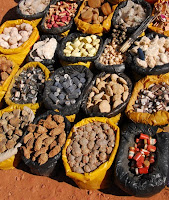Angola presently has 13 zones of integral protection. Some 82,000 square kilometres of protected lands totally 6,6% of the country’s territory; hosting six national parks, one regional park, two integrated natural reserves and four partial ones.
An increase to 18% of Angolan land usage would protect some 188,650 square kilometres of green zones in the national territory, potentially protecting existing 18 forest reserves and various game reserves.
In common with other African countries, Angola has a large number of environmental issues: the overuse of pastures and subsequent soil erosion; desertification; deforestation of tropical rain forest; and the inadequate supplies of drinking water.
 Although Angola has a number of designated National Parks and Reserves, the previous civil war has had a devasting impact on conservation and most protected areas are without wardens. On the positive side, soldiers are being trained as park wardens through a IUCN (International Union for the Conservation of Nature and Natural Resources) / Ministry of Agriculture and Rural Development Project. In addition, there are extensive protected areas that remain relatively undisturbed and which adequately protect some vegetation and habitats for Angola's unique bird populations.
Although Angola has a number of designated National Parks and Reserves, the previous civil war has had a devasting impact on conservation and most protected areas are without wardens. On the positive side, soldiers are being trained as park wardens through a IUCN (International Union for the Conservation of Nature and Natural Resources) / Ministry of Agriculture and Rural Development Project. In addition, there are extensive protected areas that remain relatively undisturbed and which adequately protect some vegetation and habitats for Angola's unique bird populations.Environment Minister Jardim announced that a new system of national conservation areas will start to be created soon, seeking to meet the goals agreed upon at the Nagoya (Japan) meeting held last year. The Nagoya meeting recommended the expansion to 20 percent the national conservation areas in the territory of each country of the world. (Angop)















